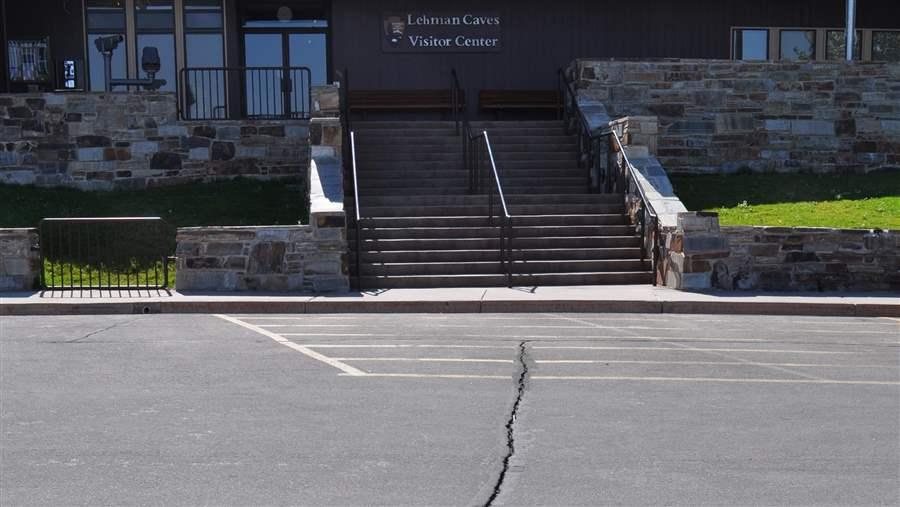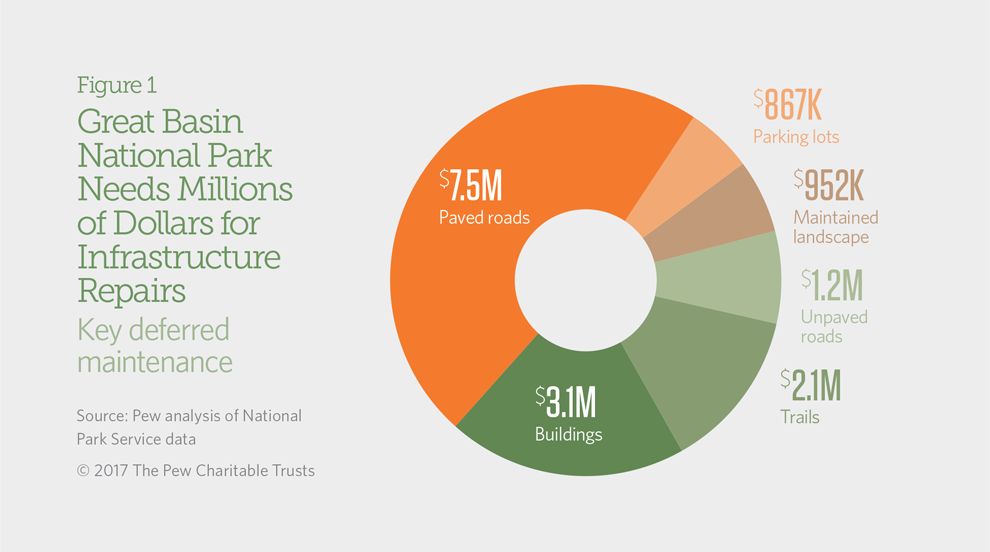Great Basin National Park
Nevada

Great Basin was designated an International Dark Sky Park for its "exceptional starry nights", but enjoyment of this extraordinary park is compromised by more than $17 million in deferred maintenance.
© iStockphotoPew created this case study using National Park Service deferred maintenance data issued in fiscal year 2015. The information listed here may no longer reflect the NPS site’s current condition or maintenance requirements. To find the most up-to-date information, please use the National Park Repair Needs tool.
This case study was updated on July 31, 2017, to reflect newly released 2016 data and to correct references to calendar and fiscal year.
Overview
From the world’s oldest tree species to the southernmost glacier in the Northern Hemisphere, Great Basin National Park encompasses extremes. This is reflected in the ecological diversity visitors experience on its trails. In the mile of elevation separating the park’s lowest and highest trails, hikers will encounter both desert and alpine lakes. The superlatives don’t stop when the sun sets: Last spring, Great Basin was designated an International Dark Sky Park for its “exceptional” starry nights.”1 But enjoyment of this extraordinary park is compromised by more than $17 million in deferred maintenance. These repairs are needed to meet legislative requirements for safety, accessibility, and environmental protection and to address the wear and tear created by the harsh environment.
The park has more than $17 million in deferred maintenance needs, including upgrades to the Lehman Caves Visitor Center.

Nearly $2 million is needed for ramps, more accessible interpretive displays, and other modifications for the disabled at the Lehman Caves Visitor Center.
© National Park Service
Maintenance challenges
Much of the park’s maintenance needs are aimed at improving visitors’ experiences and accessibility. For example, over $1 million is needed to upgrade water and wastewater systems, including replacing leaking waterlines to three campgrounds. Testing for and potential treatment of undesirable aluminum levels in water at these sites is urgently needed to ensure that these levels meet the Environmental Protection Agency’s drinking water standards. Manholes and aging sewage pipes, pumps, and grinders also need to be repaired or replaced to prevent sewage leaks that could damage the park’s unique environment.
Accessibility and safety improvements throughout the park are also on hold until there is sufficient funding. Great Basin is running a Make the Park Accessible campaign, which includes much-needed improvements to bathrooms and other visitor facilities to make them compliant with the Americans with Disabilities Act. Funds for other safety-related maintenance projects are also needed, including locating, securing, and placing warning signs at abandoned mine shafts throughout the park. Nearly $2 million is needed for ramps, more accessible interpretive displays, and other modifications for the disabled at the Lehman Caves Visitor Center. Deferred maintenance at the center also includes upgrades to the fire alarm, audiovisual, water, and electrical systems. Elsewhere in the park, the Great Basin Visitor Center needs over $160,000 in emergency repairs to fix a burst waterpipe and heating system. Due to the center’s remote location, the park also needs to purchase and install an emergency backup generator.
Funding is also needed to rehabilitate Great Basin’s campgrounds, which are heavily used. In the meantime, the park is addressing deferred maintenance on its trails by eliminating hazards and improving signage.
Visitors to Great Basin spend $6.5 million in our state, but the park needs millions of dollars of federal funding to repair the roads and trails they use.Melody VanCamp, mayor of Ely, Nevada
Recommendations
To address the deferred maintenance needs at Great Basin and other National Park Service sites in Nevada and across the country, Congress should:
- Ensure that infrastructure initiatives include provisions to address park maintenance.
- Provide dedicated annual federal funding for national park repairs.
- Enact innovative policy reforms to ensure that deferred maintenance does not escalate.
- Provide more highway funding for NPS maintenance needs.
- Create more opportunities for public-private collaboration and donations to help restore park infrastructure.
Great Basin National Recreation Area Facts
2016
| Visitor spending | $8.4 million |
| Jobs created by visitor spending | 122 |
| Economic output | $8.9 million |
| Labor income | $2.7 million |
| Visits | 144,846 |
| Deferred maintenance (fiscal year 2015) | $17 million |
Sources: National Park Service, “Annual Visitation Reports by Years: 2006 to 2016,” accessed Feb. 17, 2017, https://irma.nps.gov/Stats/SSRSReports/National Reports/Annual Visitation By Park (1979 - Last Calendar Year); National Park Service, “Visitor Spending Effects,” accessed Aug. 22, 2016, https://www.nps.gov/subjects/socialscience/vse.htm; National Park Service, “NPS Deferred Maintenance Reports,” accessed Aug. 19, 2016, https://www.nps.gov/subjects/ plandesignconstruct/defermain.htm (Pew converted National Park Service data from this webpage and other NPS sources into a searchable database)
© 2017 The Pew Charitable Trusts
The Pew Charitable Trusts works alongside the National Parks Conservation Association, the National Trust for Historic Preservation, and other national and local groups to ensure that our national park resources are maintained and protected for future generations to enjoy.
Endnote
- International Dark-Sky Association, “International Dark Sky Parks,” accessed Nov. 10, 2016, http://darksky.org/idsp/parks.


National Park Deferred Maintenance Needs
Updated with fiscal year 2019 data


Calls Mount for Congress to Fix Our Parks
To address its multibillion-dollar maintenance backlog, the National Park Service needs lawmakers’ help








